Grasslands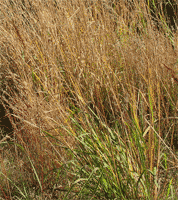
Grasslands are a vital but diminishing natural resource throughout the northeastern United States. Numerous wildlife species, particularly birds, are dependent on these areas for food, cover or breeding. Animals that can be found in grasslands include bobolink, eastern meadowlark, black racer, horned lark, northern leopard frog, small rodents, turkey, wood turtle and numerous insects. This website provides information on grasslands in Connecticut and a map of where the larger grasslands can be found.
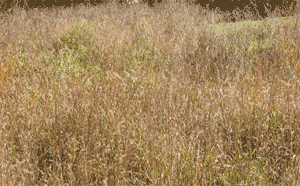 Grasslands are defined as areas in which grasses contribute more than 50% of the herbaceous cover. Most grasses are in the plant family Poaceae and are adapted to hot, dry climates. They have linear, narrow leaves and extensive root systems. The other species that may be present in grasslands are plants called forbs: broadleaved, herbaceous plants such as milkweeds, asters and goldenrods. Few, if any, trees and shrubs occur.
Grasslands are defined as areas in which grasses contribute more than 50% of the herbaceous cover. Most grasses are in the plant family Poaceae and are adapted to hot, dry climates. They have linear, narrow leaves and extensive root systems. The other species that may be present in grasslands are plants called forbs: broadleaved, herbaceous plants such as milkweeds, asters and goldenrods. Few, if any, trees and shrubs occur.
Prior to European settlement, Connecticut was largely forested with grasslands found naturally in areas with dry, sandy deposits, tidally flooded areas, areas along rivers and streams with excessive erosion and sedimentation, and in wetlands too wet to support woody plant growth. In addition, some grasslands were created and maintained by Native Americans and fire. European settlement brought the clearing of most of the forests for agriculture and later, charcoal production, such that by the 1800’s grasslands maintained by plowing and grazing were widespread throughout the state.
Land clearing by settlers
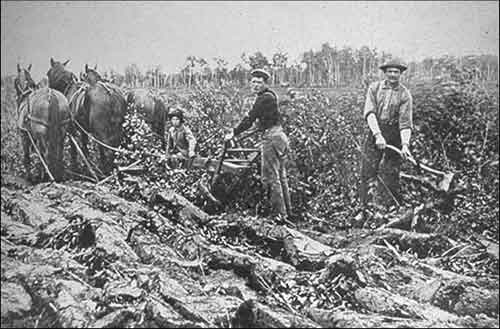
Photo courtesy Paterson GlobalFoods Inc.
-
Since the end of the 1800’s, grasslands have diminished in quality and quantity due to changes in agricultural practices, migration of farmers westward, and an increase in human population. Many grasslands have been lost to development or without management, have grown back into forests. With this loss, wildlife dependent on these grasslands has been negatively impacted.
-
Researchers have documented declines in grasslands bird populations throughout the northeast over the past 3 to 4 decades as well as noting that currently, many state listed rare bird species are associated with grasslands.
Grasslands are generally divided into two broad categories: cool season and warm season grasslands with the difference based on the type of photosynthetic cycle used by the plants. Cool season grasslands are dominated by grass species that actively grow in the spring and fall when air and soil temperatures are cool. Most cool season grasses are non-native, brought in during European settlement. Warm season grasslands are dominated by native grasses that actively grow during June through mid-September with warmer air and soil temperatures.
Examples of cool season grasses are: timothy, Kentucky bluegrass, orchard grass, tall fescue, smooth brome grass, and Virginia wild
Kentucky bluegrass (Poa |
Timothy (Phleum pratense) |
Robert H. Mohlenbrock USDA SCS |
James R. Johnson USDA NRCS |
Examples of warm season grasses are: big bluestem, little bluestem, switch grass, Indian grass, and broom sedge.
Big bluestem (Andropogon gerardii) |
Indian grass (Sorghastrum nutans) |
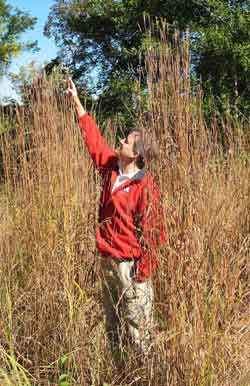 |
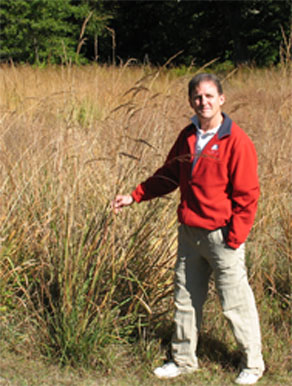 |
Little bluestem (Schizachyrium scoparium) |
Switch grass (Panicum virgatum) |
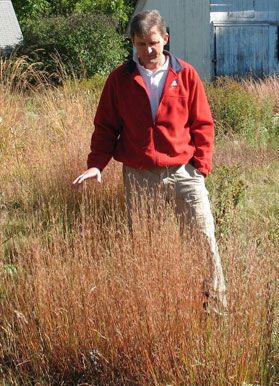 |
 |
As you can see from the photos, height and structure of a grassland varies depending on the species mix. Grasses range in height from several feet to just a few inches. Some grasses are bunch (or clump) forming while others form sod. Grasslands with bunch grasses tend to have bare ground between clumps allowing for rodent movement and foraging by chicks. This aerial photograph shows the structure of the plants (grass clumps and open spaces on the ground) in this grassland.
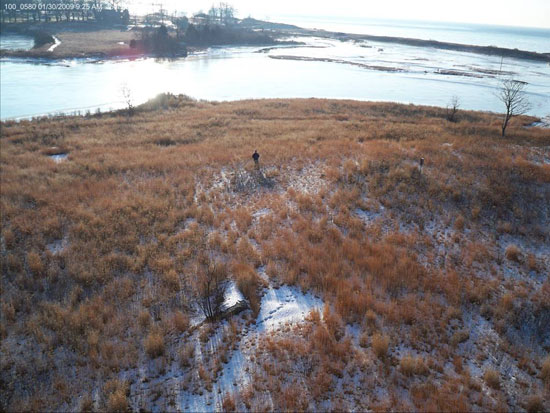
Photo courtesy of Joel Stocker
Warm season grassland with mix of species
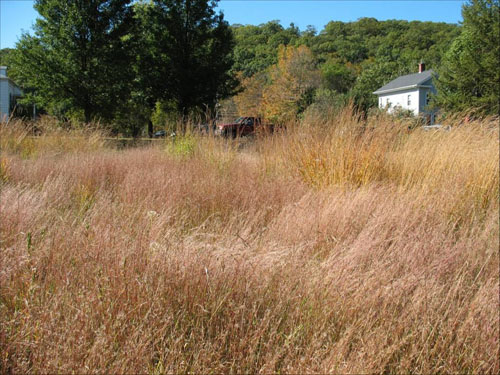
Photo courtesy of Joel Stocker
An aerial view of a cool season grassland - Horsebarn Hill in Storrs, CT
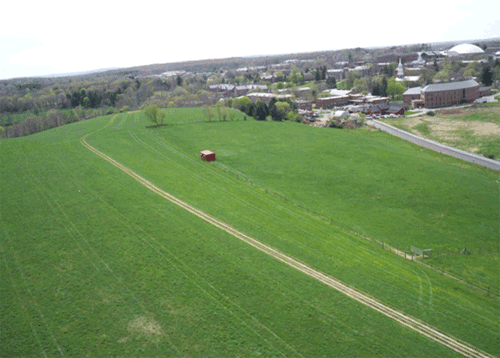
Photo courtesy of Joel Stocker
A mown cool season grassland
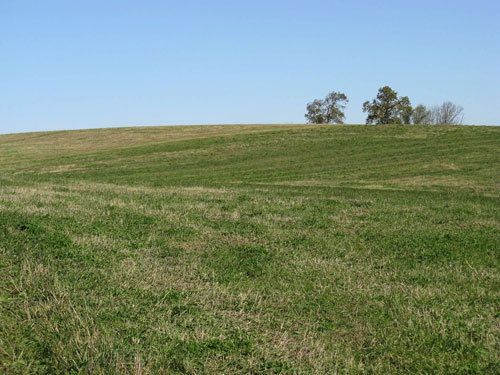
Photo courtesy of Joel Stocker
Only small remnants remain of Connecticut’s natural grasslands. Now, the most common grassland areas are agricultural fields including hayfields and pastures. Fields at airports, capped landfills, and military installations may serve as grassland habitat depending on the plant composition.
Hayfield |
Capped Land Fill |
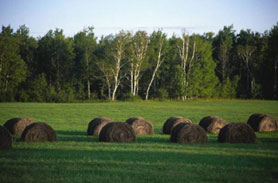 |
 |
In 2006, the Connecticut Department of Environmental Protection (CTDEP) announced a Grassland Habitat Conservation Initiative – the goal of which is to conserve grassland habitat in order to protect critical nesting and breeding grounds for birds and other species. The objectives of this initiative are to:
-
Complete a statewide survey to identify the location and quality of existing grasslands and land suitable to create grasslands
-
Establish a statewide goal for the number of acres of grassland habitat necessary to maintain a diverse population of grassland bird species throughout the state
-
Expand efforts to acquire and/or protect grasslands in order to reduce the number of state threatened and endangered grassland bird species
-
Make acquisition of wildlife habitat a key priority in the revision of the DEP’s Open Space Acquisition Plan
-
Expand efforts to create partnerships and hence improve the dissemination of information among state and local officials and landowners.
More information on the CT DEP Grassland Habitat Initiative may be found at: CT DEP Grassland Initiative. Audubon Connecticut, a part of the National Audubon Society, Connecticut Audubon and Mass Audubon have helped document the decline in grassland bird species and are active participants in the above objectives.
Grassland bird species habitat use varies depending on both the type of grassland (warm or cool) and also the size of the grassland. Many of these birds have minimum habitat size requirements for nesting, and have plant species or structure preferences. Some will nest only in grasses of a particular height; others prefer a mix of tall and short vegetation, or a particular grass species or a mix of grass and forbs.
Warm season grassland bird species include upland sandpipers, grasshopper sparrows, and vesper sparrows. (All these species are included in Connecticut's list of Endangered, Threatened and Special Concern Species.) The CT DEP has fact sheets on the following bird species:
Cool season grassland bird species include savannah sparrows, eastern meadowlarks, and bobolinks. (All three species are state listed rare species). These birds require smaller grasslands for nesting – usually less than 25 acres. They are generalists in comparison to warm season grassland birds, nesting, foraging and raising young in a variety of habitats includes hayfields, meadows and pastures. These birds will sometimes also use warm season grasslands for nesting.
Savannah Sparrow

© David Pavlik
Bobolink
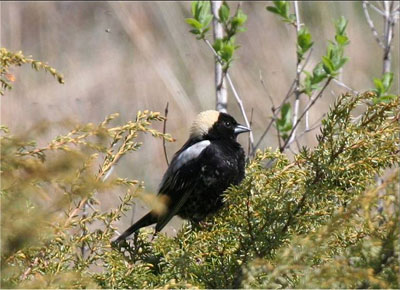
Photo courtesy of Tom Pavlik
Vesper Sparrow |
Grasshopper Sparrow |
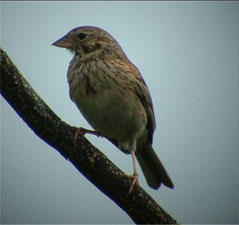
Photo courtesy of Tom Pavlik |

© David Pavlik |
-
Establishing, managing and maintaining grasslands depend on a number of factors. While establishment of a warm versus cool season grassland will differ, many of the same principles apply to their maintenance including, mowing dates, prescribed burning, grazing and herbicide use.
-
Most of Connecticut’s grasslands would revert to forest without active management.
-
Mowing in the fall every several years is an important technique to control the growth of trees and shrubs.
-
Mowing of fields is an important management technique, but the timing of mowing is critical for nesting birds. Mowing of fields should take place outside of the nesting season (April 15 to August 15). Management of active agricultural fields can be more challenging, but there are both management techniques such as raising the mowing bar in areas of bird concentrations, as well as state and federal cost share programs to accommodate modified mowing techniques.
Controlled burn of a small grassland
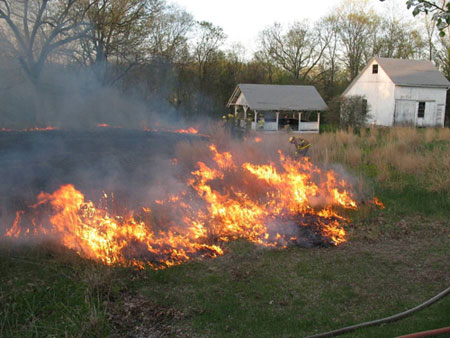
Joel Stocker
Controlled burn of a small grassland
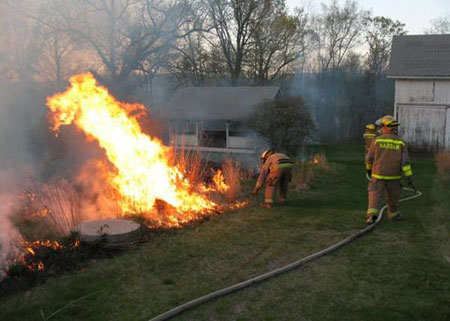
Joel Stocker
Mowing Field
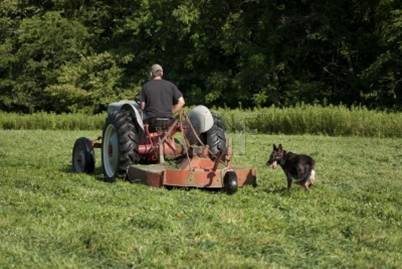
Rothbart, Paul and Steve Capel. 2006. Maintaining and Restoring Grasslands (Chapter 3) in Managing Grasslands, Shrublands and Young Forests for Wildlife. J.D. Oehler, D.R. Covell, S.Capel, B. Long (editors). Published by the Northeast Upland Habitat Technical Committee, Massachusetts Division of Fisheries & Wildlife. (p.14 – 27)
Chapter 3 (pertaining specifically to grasslands) is available online at: Maintaining and restoring grasslands Hard copies of the entire book are available for purchase at the Connecticut DEP Store.
Other website resources:

The creation of this web page and cool season grassland map development was funded in part through a grant from the Connecticut Department of Environmental Protection to the University of Connecticut. The map is not currently available through this website. Please contact the Connecticut DEP for information.


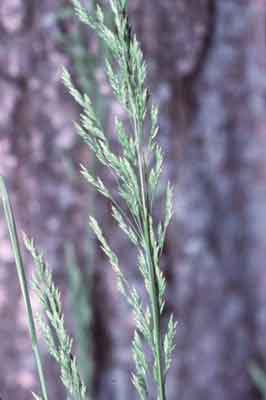 pratensis)
pratensis)
